
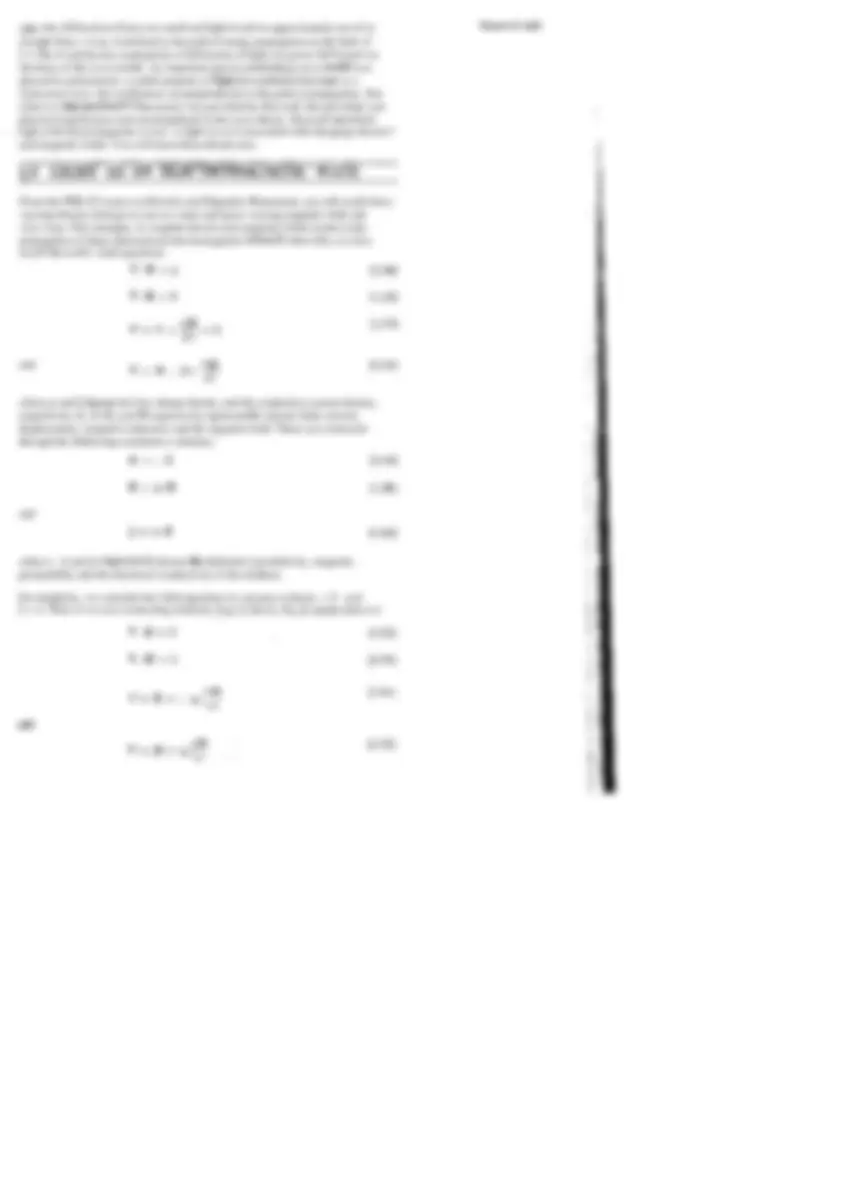
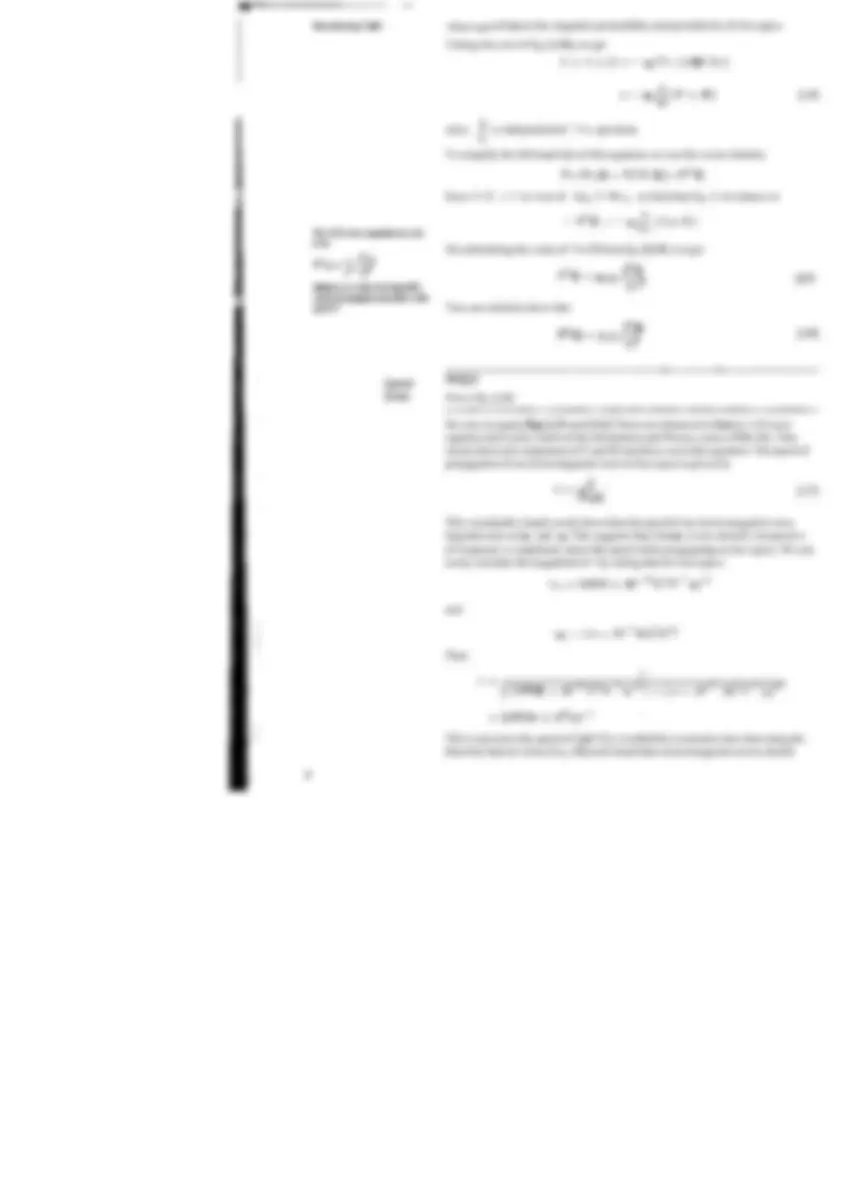

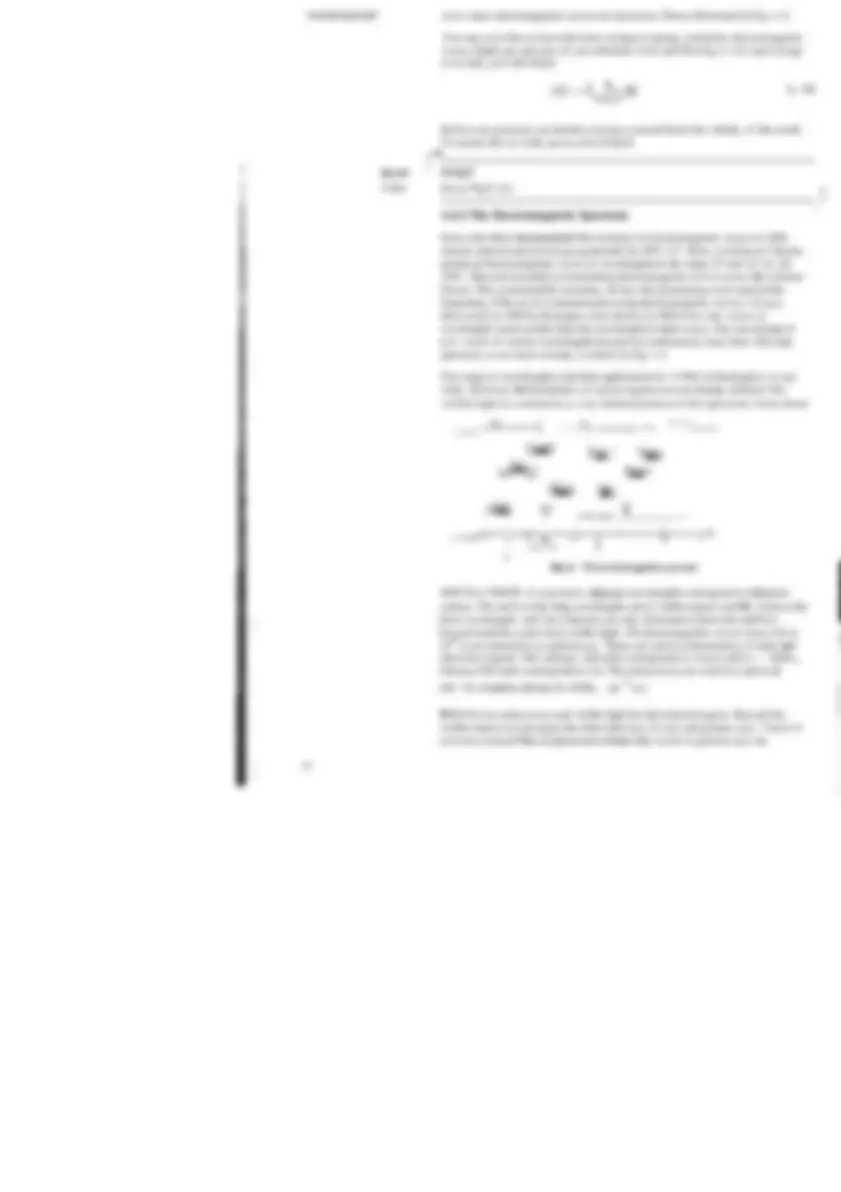
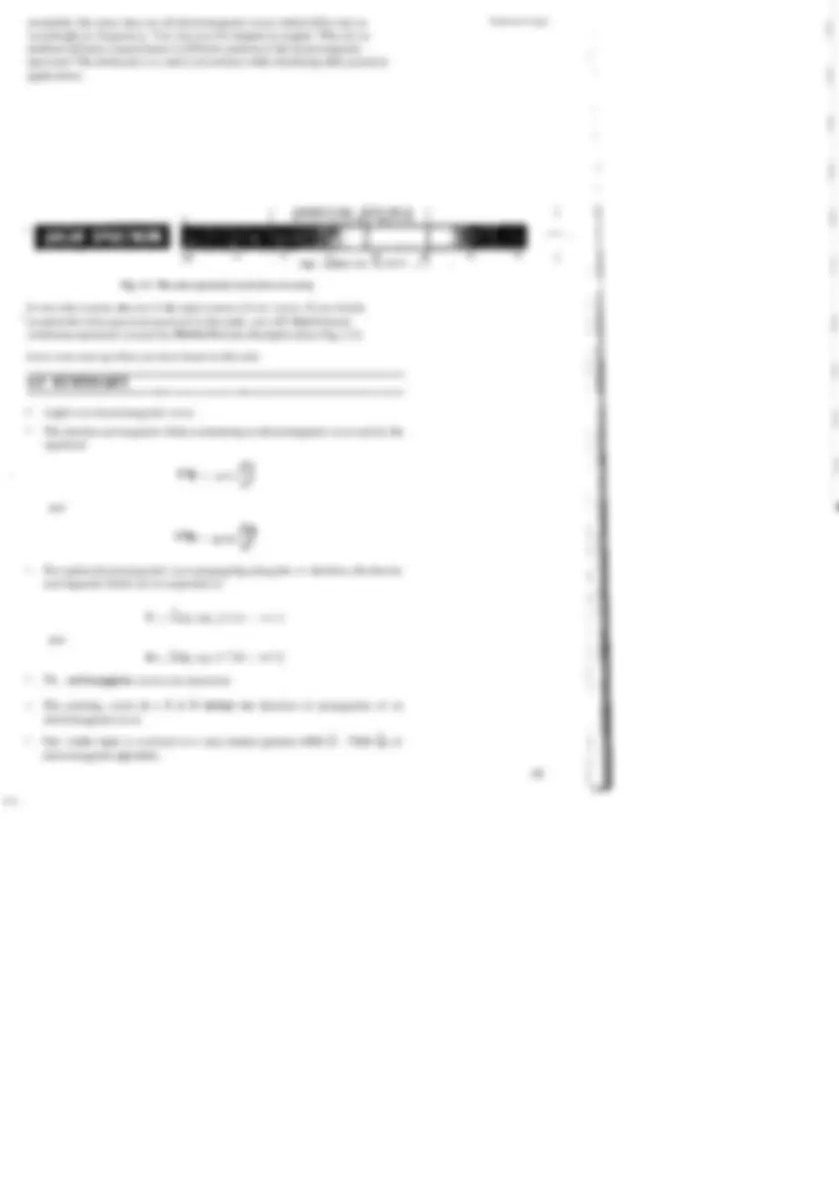
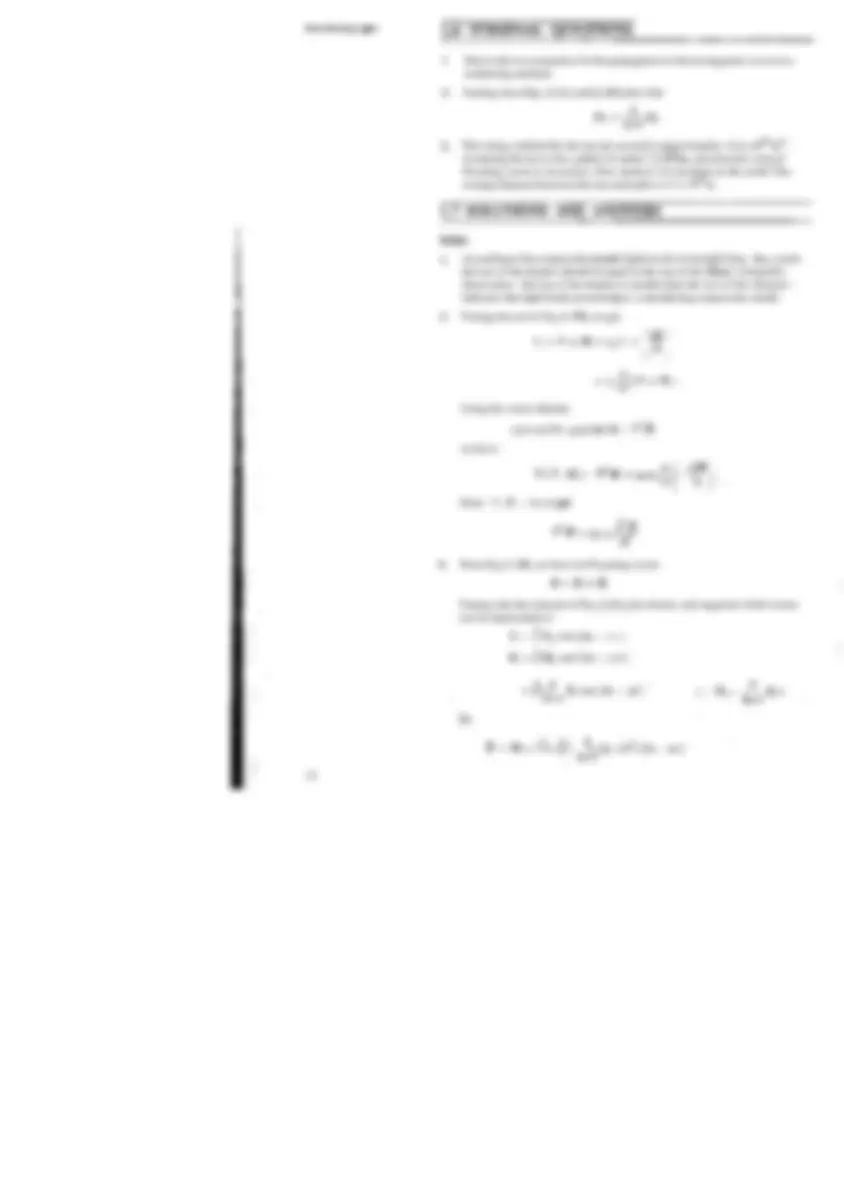



Study with the several resources on Docsity

Earn points by helping other students or get them with a premium plan


Prepare for your exams
Study with the several resources on Docsity

Earn points to download
Earn points by helping other students or get them with a premium plan
Community
Ask the community for help and clear up your study doubts
Discover the best universities in your country according to Docsity users
Free resources
Download our free guides on studying techniques, anxiety management strategies, and thesis advice from Docsity tutors
The nature of light, its importance in sustaining life on earth, and the development of optics as a branch of physics. It covers the corpuscular and wave models of light, the Poynting vector, and the electromagnetic spectrum. The document also includes terminal questions and solutions.
Typology: Lecture notes
1 / 13

This page cannot be seen from the preview
Don't miss anything!








Objectives
Energy Transfer: The Poynting Vector The ElectromagneticSpectrum
1.1 INTRODUCTION
You must have read in your school physics course that corpuscular model is due to Newton. Contrary to this popular belief, the credit sllould be given to Descartes, although the earliest speculalions about iight are attributed to Pythagoras.
The speed of propagation of light has been mensured by a variety of means. The earliest measurement made by Roemer in 1676 made use OF observations of the motion of the moons of Jupiter and apparent variations in the periods of their orbits resulting from the finite speed of propagation of light from Jupiter to earth. The first completely terrestrial measurement of the speed of light was made by Fizeau in 1849.
The corpuscular model is perhaps the simplest of the models of light. According to it, light consists of minute invisible stream of particles called corpuscles. A luminous body sends corpuscles out in all directions. These particles travel without being affected by earth's gravitation. Newton emphasized that corpuscles of different sizes stimulate sensation of different colours at the ratina of our eye.
model. Can you recall them? The two most important experimental evidences are:
(i) Light travels in straight lines. This rectilinear propagation of light is responsible for formation of sharp (perfectly dark) shadows. If we illuminate a barrier in front of a white screen, thc region of screen behind the barrier is completely dark and the region outside the barrier is completely lit. This suggests that light does not go around comers. Or does it?
(ii) Light can propagate lhrough vacuum, i.e., light does not require any material medium, as does sound, for propagation. We can also predict the correct form of the laws of reflection and refraction using the corpuscular model. However, a serious flaw in this theory is encountered in respect of the specd of light. Corpuscular model predicts that light travels faster in a denser medium. This, as you now recognise, contradicts the experimental findings of Fizeau. D o you expect the speed of light to depend on the nature of the source or the medium in which light propagate? Obviously, it is a properly of the medium. This means that the speed of light has a definite value for each medium. The other serious flaw in the corpuscular model came in the form of experimental observations like interference (re - distribution of energy in the form of dark and bright or coloured fringes), diffraction (bending around sharp edges) and polarization.
Grimaldi observed that the shadow o l a very sinall circular obstacle placed in the palh of light is smaller than its actual size. Discuss how it contradicts corpuscular model.
around the shadow. This, as w e now know, is a necessary coilsequence of the wavelike character of light. It is interesting to observe lhat even though Newton had some wavelike conception of light, he continued to empllasize the particle nature. You will learn about thc wave model of light in the lollowing section.
1.3 THE WAVE MODEL
Newton, Christian Huygens. You have learnt about it in PHE - 02. Using the wave model, Huygens was able to explain the laws of reflection and refraclion. However, the aulhority and eminence of Newton was so great that no one reposed faith in Huygens' proposition. In fact, wave model was revived and shaped by Young through his interference experiments.
Young showed that the wavelength of visible light lies in thc range 4000 A to 7000 A (Typical values of wavelength for sound range l'rom 15 cm for a high - pitched whistle lo 3 m for a deep male voice.) This explains why the wave character of light goes unnoticed (on a huinan scale). Interfcrence fringes can be seen only when the spacing belween two light sources is of the order o l the wavelength of light. Thi~tis
v x v x E - ~ V ( a w a t )X
The 3 - D wave equation has the form
where q is a physical quantity which propagates wavelike with speed v.
since -^ a is independent of V x operation.
Since V. E = 0 in view of Eq. ( 1.3a ) , we find that Eq. (1.4) reduces to
On substituting the value of V x H from Eq. (1.3d), we get
SAQ 2
means that each component of E and H satisfies a wavelike equation. The speed of
[(8.8542 x 1 0 - ' ~ C? ~ - l m - ~ )x ( 4 x lo-' N S ~ C - ~ ) ] ~ ' ~
electric grid magnetic phenomena. It was a rare moment of unveiled exuberance - a
Fig.l.1: Hertz's appuratus for the generatlonbanddelecuon of electnmagnetic waves
H = Ho exp [ i ( k z - 9 t ) l
where Eo and Ho are amplitudes of E and H.
Nature of UgM
electric field varying in space and time, and so on. You cannot separate them. This mutually supporting role results in the generation of electromagnetic
(propagating along the + z- direction) is shown in Fig. 1.2. You will note that electric and magnetic fields are oriented at right angles to one another and to the direction of wave motion. Moreover, the variation in the spacing of the field lines and their reversal from one region of densely spaced lines to another
. (^) reflect the spatial sinusoidal dependence of the wave fields.
1.4.1 Energy Transfer: The Poynting Vector
motion is: Wave carries energy, ~ i o tmatter. Is it true even for electromagnetic waves? To know the answer, you should again consider the two field vectors
If you now substitute for the cross products on the right-hand side froin Maxwell's third and fourth equations respectively for free space, you will get
The time derivatives on the right- hand side can be written as
and
so that
Nature of Light
Recall the identity V.(A x B) = B. ( V x A ) - A. ( V x B ) f r o n ~ unit 2 of PHE - 04 course on Mathematical Methods in Physics - I.
V. ( E x H ) - - - " - ( ( E " E , E +p o H. H ) (1.13) at 2 Gauss' divergence theorem relates the surface integral of a vector funclion to the volu~ne
physics? This equation rcseinbles the equatioii ol continuity in hydrostatics. To^ same^ fu~ictiori: I discover the physical signiCicailce of Eq. (1.13), you should integrate it over volumc (^) 4 n. d ~ - { V. U I V Vbound by the surface S and use Gauss' theorem. This yields iI The surface i~itegralis taken over the closed surface, S v. ( E x H ) d V - - - a S 1 ( E O ~. ~ + H. A ) ~ V S bounding the volume, V. I
I
The integrand on the right hand side refers to the time rate of flow of (^) I
it equally. The vector H S = E x H (1.14)
is called the Poynting Vector. It is obvious that S, E and H are mutually Fig. 1.3: The IBoynlingVector
Introducing 1,iyhl (^) wave since electromagnetic waves are transverse. This is illustrated in Fig. 1.3.
You may now like to know the time -average of energy carried by electromagnetic
over time, you will obtain
Before you proceed, you should convince yourself about the validity of this result. T o ensure this we wish you to solve SAQ 3. l Y a Spend I' SAQ
/
Soon after Hertz demonstratcd the existence of electromagnetic waves in 1888, intense interest and activity got generated. In 1895, J.C. Bose, working at Calcutta,
1901, Marconi succeded in transmitting electromagnetic waves across thc Atlantic Ocean. This created public sensation. In fact, this pioneering work marked the beginning of the era o l communication using electromagnetic waves.) X- rays, discovered in 1898 by Roentgen, were shown in 1906 to be e.m. waves or wavelength much smaller than the wavelength of light waves. Our knowledge of e m , waves of various wavelengths has grown continuously since then. The e.m. spectrum, as we know il today, is shown in Fig. 1.4.
The range of wavelengths (and their applications in lnodern technologies) is very wide. However, the boundaries of various regions are not sharply defined. The
visible .r^ v I (^) - - H c r ~ / i i ~ n w a v e sI (^) - - - - I I I I \,avcleng111 10 " + 10 ' (^41) 10' + I^ I^ I I^ 0 ' nl I \ 1olc1 llctl i CII: 1 A Flg. 1. 4 : The eleclron~agnetics p e c t n ~ ~ ~ ~
4000 A to 7000 A. As you know, different wavelengths correspond to difterent colours. The red is at the long wavelength- cnd of visible region and thc violet at the short wavelength - end. For centuries our only information about the universc
television signals. The ordinary AM radio corresponds to waves with h = 100m , whereas FM radio corresponds to lm. Thc niicrowaves are used for radar and satcllitecomrnunications ( h-0.5m - 10- m ).
Belween two radio waves and visible light lies the infrared region. Beyond the visible region we encounter the ultraviolet rays, X- rays and gamma rays. You musl convince yourself that all phenomena l'rom radio waves lo gamma rays are
Introducing Light (^) INAL QUESTIONS
conducting medium.
2. Starting from Eqs. (1.3~)and (1.3d) show that
Poynting vector at its surface. How much of it is incident on the earth? The 11 average distance between the sun and earth is 1.5 x 10 m.
1.7 SOLUTIONS AND ANSWERS
SAQs
indicates that light bends around edges, contradicting corpuscular model.
Using the vector identity
curl curl H = grad div H - V* H we have
Since V. H = 0, we get
can be represented as A
k
Cleo
J = o E
With the help of above relations, Maxwell's relations in a conducting medium
Using the identity V x V x A = grad div A - V 'A, we have
at
unit area. S o we can write the total average energy radiated from the surface of sun per unit time as
To calculate the encrgy incident on the earth, we should know the average Poynting vector ( SE ) at the surl'acc of earth. To do so, we denote the distance between the surface ol earth and ccntre of Ihc sun as RE = RELY + R ancl note that